No Products in the Cart
How to Punish my Dog Mindfully?
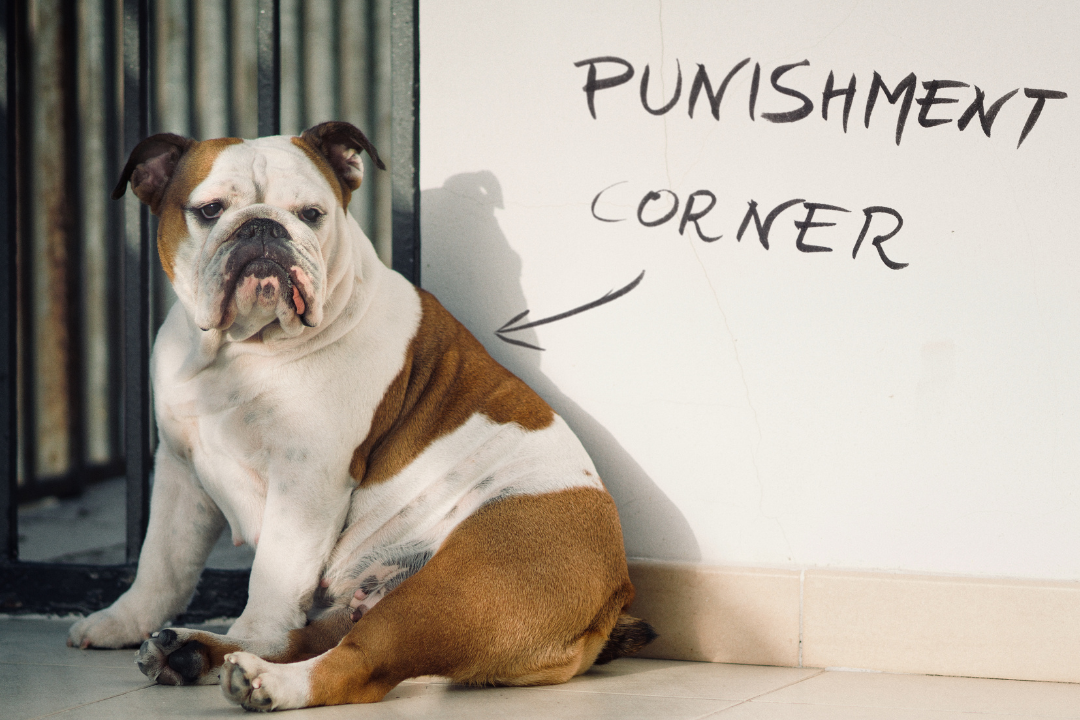
There is no doubt that our furry friends bring love into our lives. We love them dearly, and they give it back to us a thousand times! Indeed they help us through hard times, and their faithfulness is limitless! Our pets are a joy of life!
But before they become adorable innocent, loving creatures, they need to be educated and learn to be social. If you are lucky to share your life with a dog, you know that just like us humans, they sometimes can be naughty! So, you might need to correct their behaviors at times.
Punishment is often associated with violence, and new positive-reinforcement methods tend to ban this word. Nonetheless, you can "punish" your dog in a good way, which can come in handy when educating your dog.
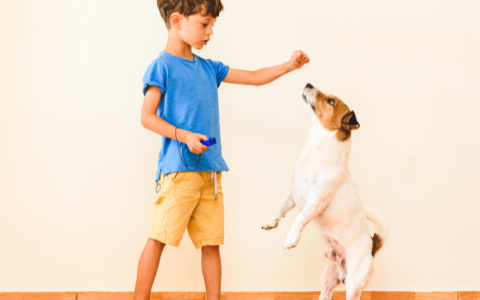
Fig 1 - Positive reinforcement is the best way you can train your dog
When should I punish my dog?
Please keep in mind that we do not recommend you use any of these methods often. You should only use punishment methods if you've explored other means and nothing worked. Also, please be mindful of how you implement punishment.
A common point for humans and animals is that we learn better when we feel good about ourselves: this is the principle of positive reinforcement.
Positive reinforcement consists in rewarding your dog after a good behavior: a treat, a pat on the back, a game, or permission to go to the garden. Everything is possible as long as it makes your dog happy. Positive techniques work exceptionally well as the bond between you and your dog grows, which takes time, patience, and love.
Little by little, your dog will understand what pleases you, and they will repeat good behavior to make you happy. So, when your dog does what you want, ensure they know you are pleased and spend time rewarding them for good behavior! They will quickly understand it's the way to your heart ( and more treats!).
But in some cases, it is necessary to punish to stop unwanted behavior: biting, dangerous situations, the tendency to eat non-food items, and the list can go on. So, punish, yes, but punish well! It will be critical for you to think about how you will discipline your dog and make sure you adapt your response to the behavior, and that you are clear in your intent. Here are some essential tips.
Should I use violence with my dog?
NO, NEVER!
You should never physically hurt a dog. If you do, they will associate physical violence with aggression. The result will be that your dog will either be terrified by you or attack to defend themselves. Attack will mainly occur if they feel corned and you are violent.
Always remember that we are looking to control and educate, not to be violent!
Violence is part of coercive methods, and we know that they do not give positive results. So, stay away from violence.
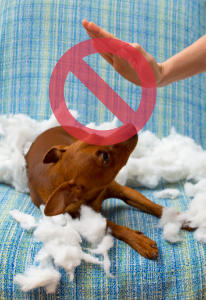
Fig 2 - Never use violence against your dog
Should I punish my dog?
When we think of punishment for a dog, we think of :
- a spank on the buttocks,
- a slap on the nose with your hand or with a piece of paper,
- picking them up and shaking them by the neck,
- yelling at them, and
- pulling them hard with the leash.
These actions are all part of what is called positive punishment or coercive methods. We understand this is a bit of a confusing concept to use the term "positive" in the context of punishment. The word "positive" here only refers to the act of adding something to your dog's environment.
It's vital to notice that "positive" doesn't mean "good" when associated with punishment. We will stay on the coercive words to avoid confusion.
In recent years, many studies have shown the double-sided effects of coercive methods.
In 2022, it is clear that dogs punished with coercive methods develop more behavioral problems, aggression, and learning disorders than dogs educated by negative punishment and other forms.
We recommend you stay away from these methods.
So, how should I punish my dog?
When your dog does something you don’t want them to do again, you need to make them understand this is not the appropriate behavior. But as we said before, coercitive punishment (also called positive punishment) is not the best method.
We present you two methods to help you cope with bad behavior.
Negative punishment method
The word "negative" here means that you take away something from your dog.
And what you take away is something pleasant. So your dog understands that it is better to stop what they are doing because otherwise, something they enjoy is taken away. We give two examples below of situations where you could use the negative punishment method.
What to do if your dog keeps jumping on you?
In general, a dog that jumps on its owners when they come back or on visitors is a dog that is looking for petting, for attention.
The negative punishment technique is to turn around, cross your arms and not interact with the jumping dog.
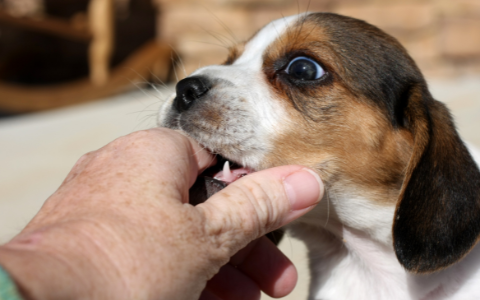
How to deal with a dog chewing your hand?
Remove your hand when you have a puppy that chews. Also, stop playing with them as you remove your hand.
Another punishment technique is the following.
Ignore and redirect to something allowed
Another strategy is to ignore the dog's mischief and redirect it to something that is allowed so you can praise it afterward. It's pretty similar to the first technique of negative punishment.
Let's see together two examples.
How to deal with a dog peeing on the floor?
If your dog pees on the floor in the living room, there is no point in shouting or hitting them. It's better to ignore them, and if you still have time, move them to a pee-pad or grass area where your dog is allowed to pee. Then you can reward them for finishing the pee where they are allowed to do so.
How to deal with a dog that chews slippers?
Puppies are pretty well known for being "slipper monsters." If that's your pup, the best thing you can do is ignore them and take one of their toys to play with in another area of the room. We can guarantee their curiosity will take over, and they will instantly come to see what you are doing while abandoning your slipper. Then, after playing with them for a while, so they forget the slippers, you give them the toy and recover your slipper, unnoticed.
It's best not to immediately go for the slipper rescue mission because you do not wish your pup to associate slipper eating with playing. So, it's best to space both events out in time.

Fig 4 - Dog chewing slippers
When should I punish my dog?
Only scold your dog if you catch them in the act, if possible, as soon as you see the unwanted behavior start. But if, for example, you come home and find a puddle of pee in the middle of the living room, it's too late to scold your dog!
NB: There is no point in sticking his head in the pee. Your dog would not understand what you are trying to explain and would be stunned by your displeasure without linking it to the peeing.
You should know that dogs never try to annoy you on purpose or out of spite. They are just following their instincts, which are not always compatible with your life in society. So instead, ask yourself:
- Can I make myself understood?
- Does my dog know why I'm upset?
- Does my dog understand that it is a punishment?
Always question yourself, not your dog: it is you who must adapt your language because it is you who educates!
We hope you liked this article. Do not hesitate to share with us your feelings about it.





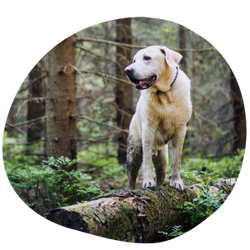
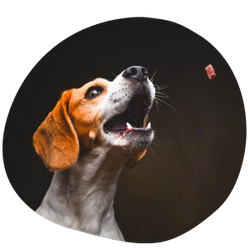

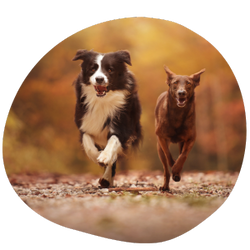
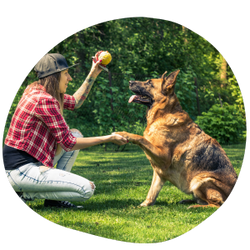

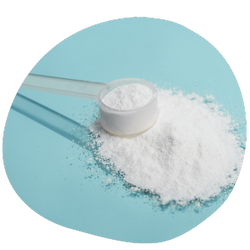
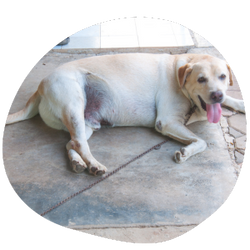

Leave a comment